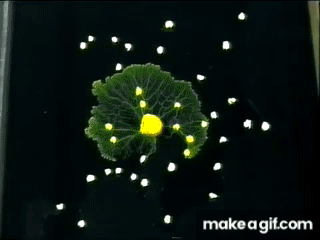How does slime mold relate to Biohaviour?
Nature is a very surprising and inspiring topic that never ceases to come up with new solutions to adapt to its environment. When we think of clever nature, we usually gravitate towards animals with their various hunting patterns and instincts which aid their survival in surprising ways.
The common recurring theme with all these decision makers is a central nervous system, the brain. We generally associate cleverness with the ownership of this vital organ. This complex organism raises really difficult questions on how to model neuronal activity so our software makes smarter decisions, something which those working in the field of artificial intelligence have grappled with for years now.
However, if we take another look at nature, we can see many examples of non-neuronal organisms that are just as capable at surviving and decision making as we are. Organisms which may not think philosophically, or actually don’t really think at all, but are able to ensure safety and a constant food source through smart decision making.

One such example of a non-neuronal organism is Physarum Polycephalum, also known as slime mold. There has been much research done regarding this mold’s decision making, with various tests ranging from solving a two-armed bandit to modelling a complex train network to navigating labyrinths. This simple unicellular mold can search its current environment, avoiding potentially harmful or unfavourable areas, to find food sources in an efficient manner.
Key Lesson for Biohaviour
Slime mold is constantly searching its environment trying to the quickest and safest route to food sources. It naturally avoids unfavourable areas. These are key skills that we would like to implement into our Biohaviour Blind Watchmaker design system. We want our design genes to naturally evolve in their environment avoiding unfavourable areas and preferring favourable ones, whatever these may be.
